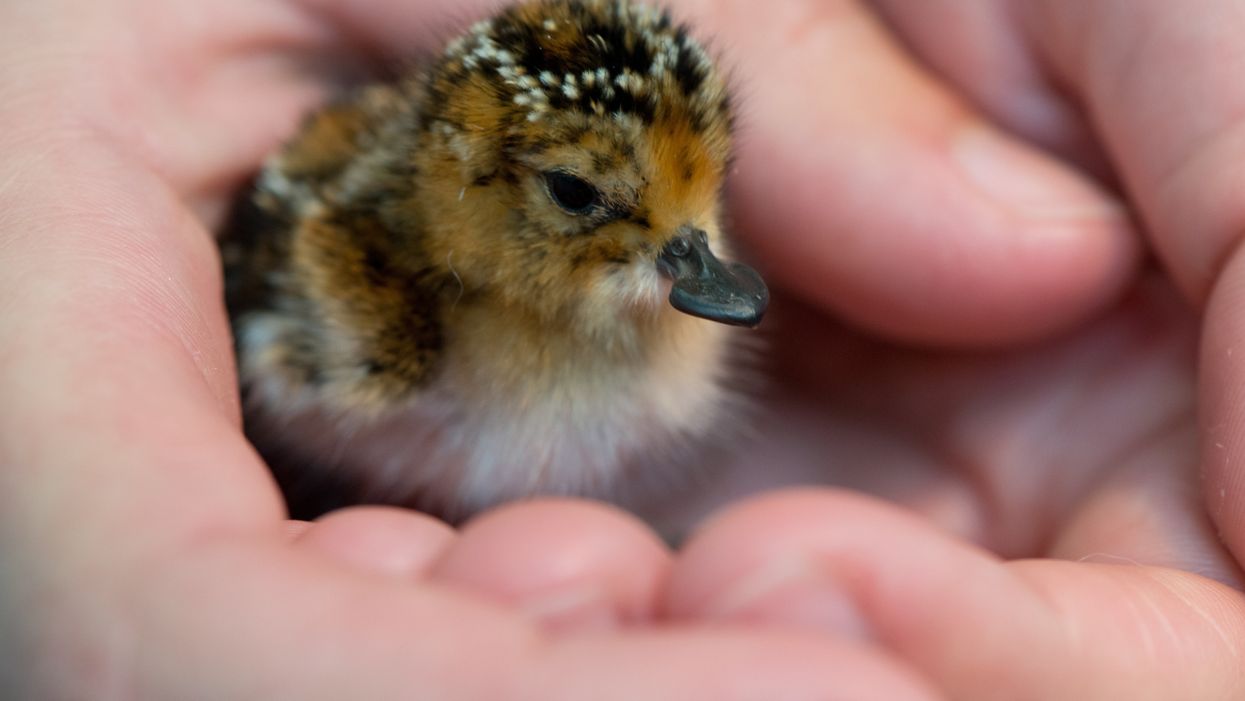
A 10-year project to give critically endangered spoon-billed sandpipers a “head start” in life has helped keep it from extinction, conservationists said.
The tiny wading birds, known as “spoonies” due to the unusual shape of their bill, breed in the Russian Arctic and migrate through East Asia to wintering grounds in Bangladesh and Burma.
They had become one of the world’s rarest birds, teetering on the brink of extinction, as numbers declined by 26% a year between 2002 and 2009, and only an estimated 120-150 breeding pairs remained by 2010.
With the risk of the species vanishing altogether by 2019, a project was launched a decade ago, using a technique known as head-starting to increase the numbers of young that survive to fledging.
The project by the UK’s Wildfowl and Wetlands Trust (WWT) and Birds Russia involves collecting eggs from their nests, which encourages the adult birds to lay another clutch, while the collected eggs are incubated, hatched and the birds hand-reared to fledging in captivity close to their tundra home.
The chicks are released into the wild once they are old enough, having been kept safe from dangers such as predation out on the tundra.
It has resulted in an increase in the number of fledglings that survive, from 2.5 out of every 20 eggs laid to 15 out of 20 eggs, the team said.
Since the project began in 2011, some 205 spoon-billed sandpiper chicks have been released into the wild in the Russian Arctic, some of which have now had their own chicks, and even “grand chicks”.
The team said the move has helped stabilise the population while the causes of their declines are discovered and addressed, such as hunting and netting through their migration and wintering grounds.
They have also been affected by the loss of wetland habitat along their migratory route, known as the East Asian-Australasian flyway, which is a key route for many migrating birds.
WWT conservation breeding aviculturist Jodie Clements has been helping the charity’s conservation breeding manager Nigel Jarrett, who first came up with the idea to use head starting,
She said that first the eggs are collected from the wild.
“The eggs are then incubated, hatched and raised artificially by trained aviculturists in the breeding ground area, keeping them safe from the dangers faced in the wild,” she said.
“Once they are able to fly, they are released into the wild population – thus giving them a head start in life.”
Evgeny Syroechkovskiy, director general of Birds Russia, said his team had continued with the head starting work through Covid-19, when travel between the UK and Russia became all but impossible.
“We’re sure we have slowed the rate of decline but extinction is still on the horizon and very definitely hasn’t gone away – the job isn’t done yet.
“We need to continue with our head starting work so that extinction is never an option.”
WWT said conservationists had been working with governments and communities along the flyway to raise awareness of the importance of protecting habitats and birds.
Interventions to help the tiny bird also include aid for subsistence hunters in Burma to shift from relying on hunting to more sustainable occupations and halting major projects to claim land from coastal habitats around China’s Yellow Sea.
















